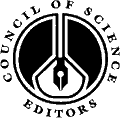
Below are SUMMARIZED guidelines from the Council of Science Editors (CSE) to use when referencing your work.
There are two parts to referencing. Firstly, the source of
information is indicated by placing the author’s surname and the year of
publication in brackets at the appropriate place in the body of the text.
Secondly, at the end of the paper the full references are listed in alphabetical
order by first author surname.
1) Citations in the text
The surname of the author and the year of publication are
placed in parentheses to acknowledge the source of information, e.g. (Smith
2006).
If the author’s name forms part of the sentence, provide
only the year of publication in parentheses, and place the parentheses
immediately after the name, e.g. Smith (2006) made this discovery.
If there are two authors on a paper, separate their names
with either ‘and’ or ‘&’, e.g. (Smith and Jones 2006).
For three or more authors on a paper, use the name of the
first author followed by et al. (which means ‘and others’), e.g. (Smith
et al. 2006).
When quoting directly from a source, use quotation marks
and then provide the page number where that quote was taken from with the
citation, e.g. (Smith 2006 p 57).
Multiple references for the same statement are separated
with a semi-colon and ordered chronologically, e.g. (Smith 1998; Jones 2002).
For multiple works by the same author, give the name once
and then separate the years with commas, e.g. (Smith 2000, 2003)
For multiple works by the same author in the same year, use
small letters to distinguish them, e.g. (Smith 2006a, 2006b). The first work
that you refer to will be “a”, the second one “b”, and so on.
2) Reference list
The reference list is alphabetical by the first author’s
surname. When authors have identical surnames, sequence references
alphabetically by the initials of the first author, then by the first letters of
any following surnames. When the authors’ surnames are identical in two or more
references, these references are sequenced by publication date from earliest to
latest. Use the formats below to reference specific sources of information.
· Book:
General format: Author/editor. Year. Title of book.
Edition. Place of publication: Publisher. Number of pages.
Example: Krebs JR, Davies NB. 1993. An Introduction
to Behavioural Ecology. 3rd ed. London: Blackwell Science. 420 p.
· Book Chapter:
General format: Author. Year. Title of chapter. In:
Editor of book, editor. Title of book. Edition. Place of publication: publisher.
Pages of selection.
Example: Akerele O. 1995. Medicinal plants and
protected areas. In: McNeely JA, editor. Expanding Partnerships in Conservation.
Washington, D.C.: Island Press. p 75-81.
· Journal Article:
General format: Author. Year. Article title.
Journal title Volume(Issue):Pages.
Example: Ryan MJ, Rand W, Hurd PL, Phelps, SM, Rand
AS. 2003. Generalization in response to mate recognition signals.
American Naturalist 161(3):380-394.
· Dissertation or Thesis:
General format: Author. Date. Dissertation/Thesis
title [dissertation/thesis]. Place of university: Name of University. Number of
pages.
Example: Angell CM. 2006. Body fat condition of
free-ranging right whales Eubalaena glacialis and Eubalaena australis
[PhD thesis]. Boston: Boston University. 256 p.
· Newspaper Article:
General format: Author. Year Month Day. Article
title. Newspaper title; section:pages (column).
Example: Rensberger B, Specter B. 1989 Aug 7. CFCs
may be destroyed by natural process. Washington Post; Sect A:2 (col 5).
· Conference Paper:
General format: Author. Year. Paper title. In:
Editor, editors. Title of volume. Conference Name; Full date; Place of
publication: Publisher. Pages of selection.
Example: De Bourcier P, Wheeler M. 1997. The truth
is out there: the evolution of reliability in aggressive communications systems.
In: Husbands P, Harvey I, editors. Proceedings of the fourth European conference
on artificial life. Fourth European Conference on Artificial Life; 1997 Jul
28-31; Cambridge; MA: MIT Press. p 444 453.
· Conference Abstract:
General format: Author. Year. Abstract title
[abstract]. In: Conference name; Full date; Place of conference: Title of
organization. Pages of selection.
Example: Bottai M. 2001. Bootstrap confidence bands
for assessing environmental pollution [abstract]. In: Geographic Information
Sciences in Public Health: First European Conference; 2001 Sep 19-20; Sheffield,
UK: Stockholm Center of Public Health. p 25.
· Magazine Article:
General format: Author. Date. Article title.
Magazine title: pages.
Example: Wilson EO. 1998 Mar. Back from chaos.
Atlantic Monthly: 41-62.
· Electronic Journal:
General format: Author. Article title. Journal
title [internet]. Date published [cited date]; volume(issue):pages.
Available from: URL
Example: Janz N, Nylin S, Wahlberg N. Diversity
begets diversity: host expansions and the diversification of plant-feeding
insects. BMC Evolutionary Biology [internet]. 2006 Jan 18 [cited 2006 Jun
23]; 6(4): (10 pages). Available from: http://www.biomedcentral.com/1471-2148/6/4
· Web Page:
General format: Author. Document title [internet].
Title of complete work; update date [cited date]. Available from: URL
Example: Wikipedia contributors. Citation
[Internet]. Wikipedia, The Free Encyclopedia; 2006 Jun 30, 18:21 UTC [cited 2006 Jul 16]. Available from: http://en.wikipedia.org/w/index.php?title=Citation&oldid=61411767.
This was prepared by Dr Vanessa Couldridge for students to have a quick guide.
Cheers
Rich
